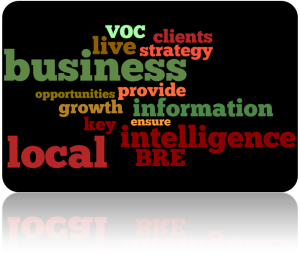 In the article North Peace Economic Development Commission to launch a regional Business Retention and Expansion, the NPEDC says that it’s creating a BRE program – in short – to convey it cares about local business – those that aren’t being recruited like royalty and yet still provide well over 70%-80% of job growth in most communities. But as you read further in the article, there is a key statement: The NPEDC says the information gathered through the program provides live business intelligence to attract new investment, foster and support growth of the existing investment, and identifies key challenges facing the business sector of the region.
In the article North Peace Economic Development Commission to launch a regional Business Retention and Expansion, the NPEDC says that it’s creating a BRE program – in short – to convey it cares about local business – those that aren’t being recruited like royalty and yet still provide well over 70%-80% of job growth in most communities. But as you read further in the article, there is a key statement: The NPEDC says the information gathered through the program provides live business intelligence to attract new investment, foster and support growth of the existing investment, and identifies key challenges facing the business sector of the region.
This is the 21st century – information travels at the speed of a click, a tweet, a post, or a like. It’s vital that local BRE programs have the intelligence on your local businesses (and FOR your local businesses) that identifies opportunities for growth, risk of job loss or facility closure, needs for improving aspects of the local business climate or technology infrastructure, opportunities to address development-constricting processes or policies, challenges in workforce development or excessive permitting fees, etc.
When we work with clients outside of the BRE world in local government, healthcare, pro sports, and education, we often suggest that they need to have a Voice of the Customer (VOC) strategy. Likewise, for BRE organizations to have “live business intelligence,” they must be intentional about that VOC strategy. Take and use these quick VOC tips that we’ve shared with clients in other industries:
- Have a quantifiable component (i.e., surveys) to evaluate multiple aspects of the local industry’s experience in working with municipal processes, policies, code/ordinances, and people.
- Utilize predictive characteristics about retention/growth likelihood based on key factors (e.g., Leadership Change, Economic Concerns, Alternative Locations/Recruitment Efforts, Business Performance, etc.) or historical risk factors locally.
- Gather information from more Passive means on a daily basis about the company, other company facilities, organizational performance, etc. – See http://brebuzz.com/ – this defines “live business intelligence.”
- Include Focus Groups and 1-on-1 interviews for deep dives on specific issues or about consideration of future changes/improvements.
- Include Local Industry Advisory Boards that provide some consistent feedback mechanism as ideas are developed, refined, and moved toward implementation.
- Use multiple platforms (face-to-face, web, social media, e-mail, telephone, etc.) to ensure breadth of responses to/from clients and the community.
- Share results in actionable formats with deadlines and timetables – ensure customers know what you’re doing or planning to do with the information they provide to you.
Make “live business intelligence” a part of your Voice of the Customer strategy.
Did you like this post? Here are other BRE-related posts:
- TIME – A Business Retention & Expansion Pro’s Constant Battle
- BRE’s Target is Long-term Growth
- Go Back to Where You Started in Business Retention & Expansion
See more on Business Retention & Expansion business intelligence at: http://brebuzz.com/























